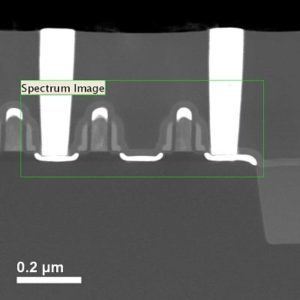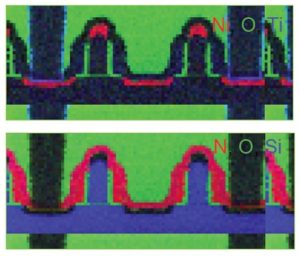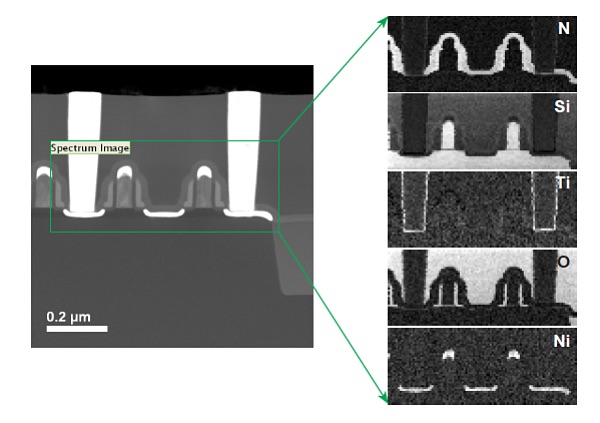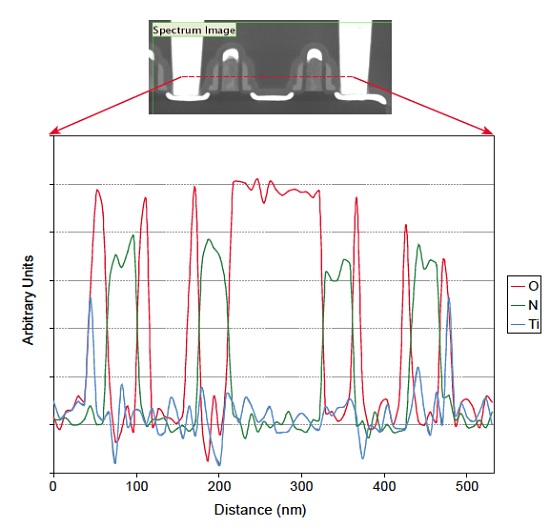Two-dimensional Mapping of Matrix Elements in a Microelectronic Device by STEM-EELS
Home » Two-dimensional Mapping of Matrix Elements in a Microelectronic Device by STEM-EELS
Scanning Transmission Electron Microscopy (STEM), combined with Electron Energy Loss Spectroscopy (EELS), can provide spatially resolved microanalysis of a microelectronic device at the nanometer scale.
With STEM-EELS, each point in the image can be directly linked to a spot in the elemental distribution maps. The technique has excellent lateral resolution (~1nm) that allows mapping of non-planar features in the target device.
DISCUSSION
A High Angle Annular Dark Field (HAADF)-STEM image of a Si-based MOSFET device is shown in cross-section in Fig. 1. In this imaging mode the contrast is dependent on the average atomic number of the material.
Within the imaged area, there are three transistor gates with alternating source/drain contacts made of NiSi and two TiN-lined W contacts. A 2-d STEM-EELS map was acquired with a selected pixel resolution of 5nm × 5nm and signals for Si, Ni, N, O & Ti were monitored.


The signals are mapped as composite images in Fig. 2 and as individual distribution maps in Fig. 3. From the raw 2-d EELS spectrum image data set it is possible to extract a line-profile in any orientation. One such example is shown in Fig. 4.
However, it should be noted that, for the present case the signals for O, N and Ti are noisier than if a separate EELS acquisition was optimized for just these three elements. This is a tradeoff between mapping elements spanning a large energy loss range and the exponential fall in EELS signal intensity with increasing energy loss.
In the present case a wide energy loss range was monitored to include signals from Si (L2,3 @ 99.2eV) to Ni (L2,3 @ 854eV) with the core loss edges of Ni, Ti and O occurring in between (@ 401.6eV, 455.5eV & 532eV respectively).


Would you like to learn more about Mapping of Elements in a Microelectronic Device?
Contact us today for your elements in a microelectronic device by STEM-EELS. Please complete the form below to have an EAG expert contact you.